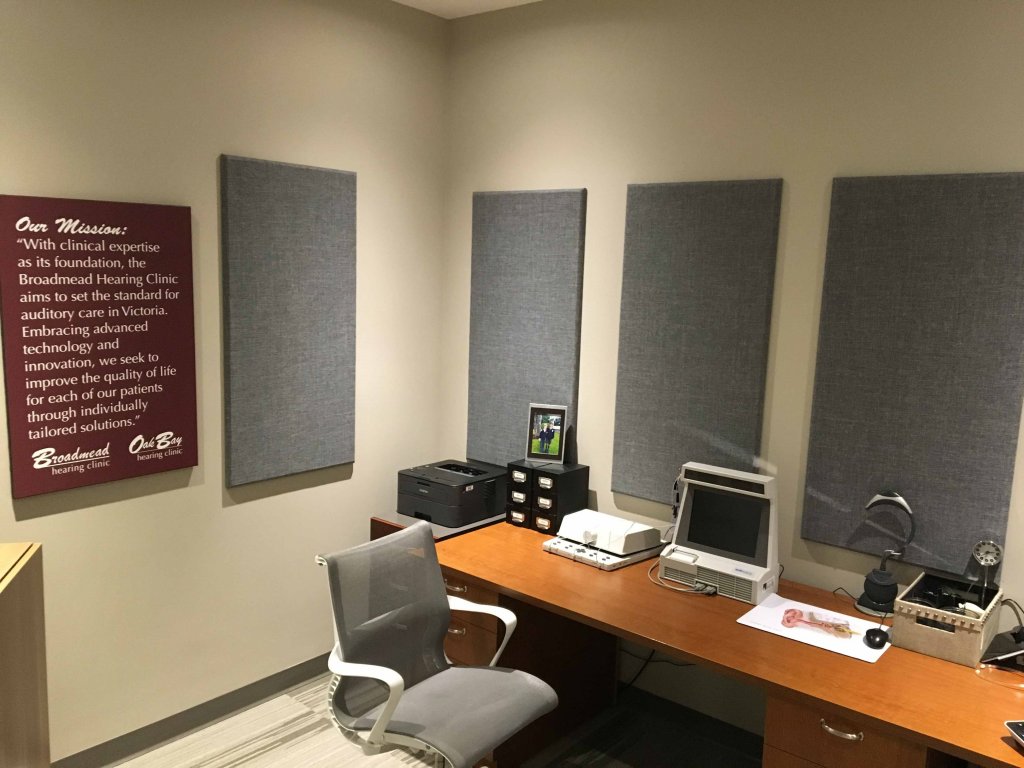Exceeding Client Expectations with Acoustically Treated Fitting Spaces
When delivering and fitting a new set of hearing aids, the first impression is of key importance for the client to make an easy transition to life with this new and costly addition to their communications needs. The hearing aid must meet the criteria of being physically comfortable to wear, aesthetically acceptable and perhaps most importantly, improve the quality of life for the user as they gain confidence in this new technology.
As sound is so greatly affected by the environment in which it is created, it is crucial that a space with a balanced frequency spectrum, free of excessive echo and reverberation, is available for the initial fitting and evaluation. A consultation and fitting room properly treated with acoustic panels provides the practitioner an important tool to support a successful consultation and fitting experience for their client. In fact, one major membership-driven warehouse-style retailer has realized the importance of this initial customer experience and is in the process of outfitting all 65 of their hearing centres in Canada with acoustic panels to provide an effective environment.
Placing acoustic panels on as little as 20–30% of the wall surface area in the room frees the space of excessive echo. This eliminates the root cause of a lack of intelligibility which is the issue that has plagued the client and caused them to seek out hearing assistance in the first place. Acoustic panels serve a simple but critical function to manage the sound in the room. Sound strikes the acoustic panel, causing the minute glass wool fibres inside to vibrate. This absorbs the sound energy stopping it from propagating, eliminating the echo.

Broadmead Hearing Clinic in Victoria, B.C. recently installed a selection of Primacoustic Broadway acoustic panels in their clinic.
It is important to note that the omnidirectional microphone pickup pattern in hearing aids combined with the compression circuits does not react the way a human ear does and cannot decipher relevant program material from the anomalies. The mic flattens out the information, making it impossible for the user to discern what they want to hear thus blurring intelligibility. Just as communicating in a loud restaurant is both irritating and tiresome, turning up the volume on a hearing aid merely exacerbates the problem. By attenuating the excessive reverberation in the room, you will eliminate the smearing of consonant sounds that provide definition and remove the anomalies that cause intelligibility problems. This first experience will allow for a superior initial orientation environment for the client.
When a client puts their new hearing assist device in for the first time, they are expecting their world to be changed for the better. During the fitting, it is imperative that the experience be positive. The disappointment of underwhelming performance can undermine confidence in the process, the device and the audiologist. A modest investment in easy-to-install acoustic treatment assures this experience is optimal for client and practitioner.

